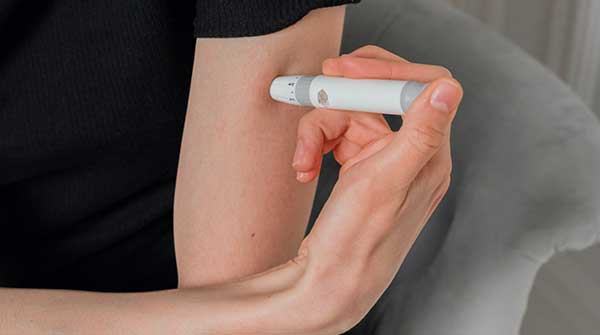Promising results in innovative diabetes treatment method that enhances the safety of insulin cell transplants
A team of researchers at the University of Alberta is working on a project to improve the safety and accessibility of insulin-producing cell transplants for people with diabetes.
The researchers are testing special materials that can carry anti-rejection drugs directly to the transplanted cells, reducing the need for these drugs throughout the entire body. The goal is to minimize side effects, lower the risk, and make this life-changing treatment available to more patients.
 Andrew Pepper |
 Gregory Korbutt |
The project is part of a series of research initiatives at the U of A that have received nearly $10 million in funding from the Canadian Institutes of Health Research. The research team aims to enhance the effectiveness of beta cell replacement therapy, which involves transplanting insulin-producing cells to help control glucose levels in patients with Type 1 diabetes.
“We’re looking at reducing the reliance on systemic immunosuppression drugs and keeping them localized to just the cells that are providing the glucose control instead of the whole body,” explains Andrew Pepper, assistant professor of surgery and Canada Research Chair in Cell Therapies for Diabetes.
“We think that will reduce the side-effects, reduce the risk and increase the patient population that could benefit from a life-changing beta cell replacement therapy,” says Pepper, who co-leads the project with Greg Korbutt, scientific director of the Alberta Cell Therapy Manufacturing facility.
An estimated 300,000 Canadians have Type 1, or insulin-dependent, diabetes. In 2000, a U of A team launched the groundbreaking Edmonton Protocol – which has so far transplanted insulin-producing beta cells into the livers of 255 patients whose diabetes could not be well controlled with insulin injections.
Those patients must take lifelong anti-rejection drugs, which can lead to infection, kidney damage and even cancer. The transplant program relies on donated organs, with each recipient needing cells from two or three donors, so the number of patients who can be treated is limited.
“We know that in the early post-transplant period, within hours to days, we lose up to 70 percent of the cells,” says Pepper. “If we can help the cells to survive longer, then hopefully we can use just one pancreas per recipient.”
Pepper’s research team will graft beta cells under the skin with bubble-like microparticles developed by research associate and biomaterials expert Purushothaman Kuppan. They slowly release medication to prevent post-transplant inflammation, promote insulin secretion and encourage cell survival. The team will first test the grafts on mice and pigs and then, if results continue to be positive, will make plans for a human clinical trial.
“We have been able to use a fraction of the dose (of anti-rejection medication) in animal models to date, with the cells surviving for hundreds of days,” says Pepper. “The drugs are only present for about a month because the bubbles pop over time.”
Preliminary results have been promising, with the potential to reduce the amount of anti-rejection medication needed and extend the lifespan of the transplanted cells. The researchers hope that this approach will also work with beta cells from a patient’s own stem cells, which is another advancement being explored at the University of Alberta.
| By Gillian Rutherford
This article was submitted by the University of Alberta’s Folio online magazine, a Troy Media Editorial Content Provider Partner.
The opinions expressed by our columnists and contributors are theirs alone and do not inherently or expressly reflect the views of our publication.
© Troy Media
Troy Media is an editorial content provider to media outlets and its own hosted community news outlets across Canada.


